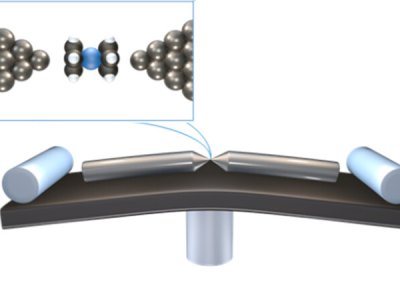
In contrast to conventional silicon-based transistors that rely on complex electronic gating mechanisms, the fascinating realm of single-molecule junctions offers a novel approach, where these tiny structures can be controlled and modulated using simple mechanical means. By applying either stretching or pulling forces to the electrodes that connect a single molecule, remarkable changes in its conductance characteristics can be achieved.
To comprehend the intricate effects of gating on the conductance of single-molecule junctions, the use of quantum theory becomes indispensable. Quantum theory provides a powerful framework for investigating the behavior of individual electrons and their interactions within these molecular systems. Our dedicated team of researchers has formed a collaboration with an experimental laboratory, forging a synergistic partnership to delve deeper into the fundamental mechanisms that occur when a single molecule is subjected to mechanical stretching.
Through this collaboration, we aim to uncover the intricate dynamics and underlying principles that govern the conductance modulation of single-molecule junctions under mechanical gating. By combining theoretical analysis and experimental investigations, we can unravel the complex interplay between the mechanical deformation of the molecule and its resulting conductance properties.
The scientific journey involves investigating various aspects, such as the changes in bond lengths and angles within the molecule, the redistribution of electron density, and the alteration of energy levels as a consequence of the mechanical strain. By comprehensively studying these phenomena, we can gain profound insights into the behavior of single-molecule junctions under gating conditions, paving the way for the development of advanced nanoscale devices with enhanced functionalities.
This interdisciplinary endeavor between theory and experimentation holds immense potential for technological advancements, as it allows us to harness the unique properties of single molecules and exploit them for a range of applications, including molecular electronics, sensing, and nanoscale computing. By unraveling the mysteries of mechanical gating on single-molecule conductance, we are poised to unlock a new era of transformative technologies that push the boundaries of what is currently possible in the realm of nanoscience and nanotechnology.




